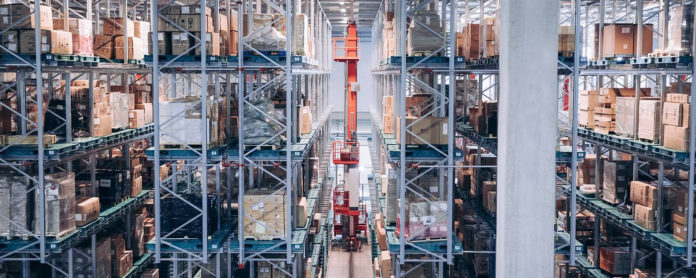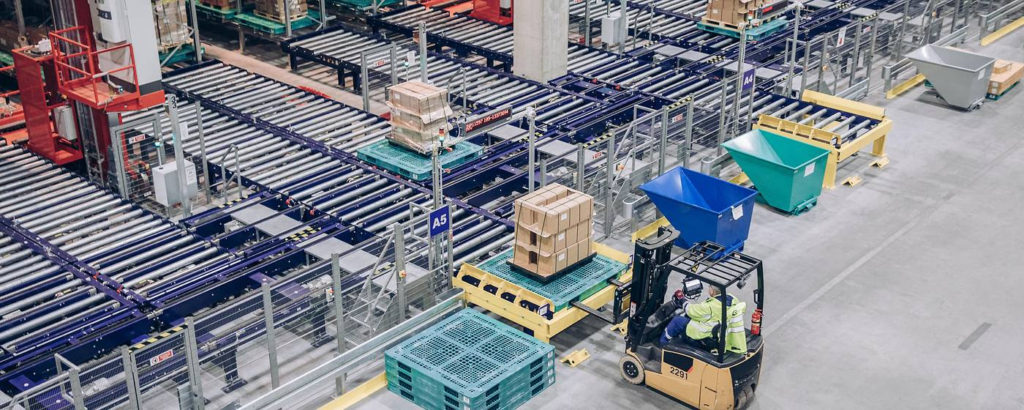
The Black Friday weekend has a visible impact not only on online sales, but also on air cargo volumes. Smartphones and accessories, especially, are delivered from Asia to Europe in large volumes. The following statistics tell the story of how consumption is changing and evolving – and impacting global air cargo.
The so-called Black Friday weekend is a truly gargantuan shopping event. Taking place on and around the US Thanksgiving holiday at the end of November, it offers up an annual bonanza of both online and high street discounts, and it’s steadily going global.
The implications are felt not just by retailers and manufacturers, but also by the likes of Finnair Cargo who must deliver the goods at Thanksgiving. We took a look at some compelling statistics.

1. Black Friday generated $6.22 billion in online sales in the US alone
This makes it the busiest shopping day of the year if we count both in-store and online purchases. While there’s a definite trend towards e-commerce across the holiday period generally, Black Friday is still seen as the day to venture into a store to buy newer, big-ticket items.
2. Cyber Monday saw $7.9 billion in online sales in 2018
According to Business Insider, if Black Friday is the day for hitting the shopping malls, Cyber Monday is when shoppers scope out tech bargains and online deals. In fact, the trend of busy holiday shoppers moving their purchasing online after the holiday weekend is so clear that retailers now refer to it as the “Turkey 5” cluster of discount days surrounding Thanksgiving. Adobe, which tracks some 80 per cent of online transactions in the US estimated an almost 20 per cent increase in Cyber Monday digital sales year on year.
3. 57 per cent of worldwide purchases online are from overseas retailers
It’s not a coincidence that Black Friday’s biggest sellers are also online giants. Amazon claims its customers ordered more than 180 million items during the five days from Thanksgiving to Cyber Monday in 2018, while WalMart, the third largest online seller in the US, joined Amazon, Target, Nordstrom and Macy’s at the top of the list of Black Friday retailers.
4. In-store traffic fell by as much as 9 per cent in 2018
While “Turkey 5” revenue expands every year, it’s largely thanks to online spending. 2018 online sales for Black Friday and the two days before were over 26 per cent higher than the previous year, according to Adobe Systems. In the year before that they were up by 18 per cent.
This reflects a growing trend towards foregoing the crowds in favour of “armchair shopping”. The implications for cargo transport are huge, as consumers’ expectations now extend down to the very last air mile.
5. More than one-third of all sales came from smartphones
Almost 34 per cent of e-commerce transactions on Black Friday came from smartphones, a 10 per cent increase on the previous year, according to a report from Adobe. This surpasses the $1.4 billion record set by Cyber Monday shoppers in 2017.
This puts increasing pressure on retailers to deliver a good digital experience to potential buyers. It’s also an important fact to note for the service providers who support those retailers.
6. Black Friday digital sales growth outpaced Cyber Monday sales in major markets by more than 34 per cent in 2018
The Black Friday phenomenon is expanding to include the whole week of Thanksgiving, and this trend is more pronounced outside the US. In leading markets worldwide, digital sales growth has proved higher on both Saturday and Sunday than on either Black Friday or Cyber Monday.
7. Russia’s Black Friday revenue grew 137 per cent year on year
According to eShopworld, a global leader in cross-border commerce, throughout the holiday period from Friday to Monday 2017-2018, Australian and UK revenue grew by 114 per cent and 71 per cent respectively. Germany and Canada also recorded marked spikes in year on year revenue throughout this period.
As major markets worldwide jump on the Black Friday bandwagon, catering to demand is not just a matter of volume. It’s also a question of geographical scope.
8. Transport hubs can experience a 100 per cent rise in freight rates
According to international shipping and logistics experts JOC, transport hubs such as Hong Kong and the United Kingdom can see demand for freight double over the Black Friday period. A large factor for this is smartphones and accessories being shifted from Asia to Europe in large volumes.
Companies like UPS and FedEx have learned hard lessons from the meteoric rise in online sales. They are braced for the peak season, and both companies claim they are better positioned to deal with the demand in 2019.










